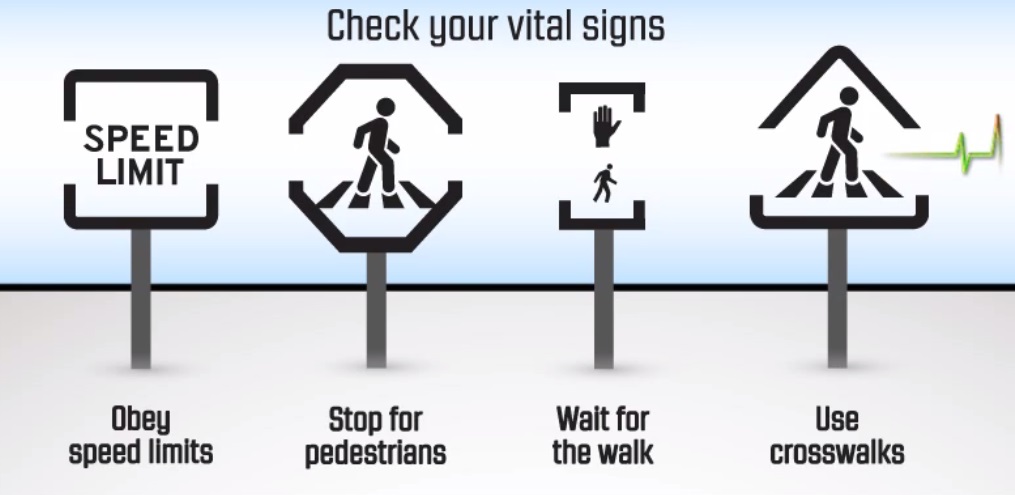
The North Jersey Transportation Planning Authority (NJTPA) kicked off its Street Smart pedestrian safety program earlier this month in Hackettstown, Jersey City, Long Beach Island, Newark and Woodbridge. This new public education, awareness, and behavioral change campaign “comes at a significant time as New Jersey is ranked 14th in the nation in pedestrian fatalities” and was recently listed among the Federal Highway Administration’s “Focus States” — states where pedestrian deaths are greater than the national average.
Newark’s inclusion in the Street Smart program makes particular sense for the NJTPA area. According to a report that accompanied the program’s launch, there were 1,863 pedestrian crashes in Newark between 2009-2012, 27 of which were fatal. In recent years, the City of Newark has been making important strides to improve safety for all road users, most dramatically with the passage of a Complete Streets policy in 2012. But more attention must be given to the City, especially since 44 percent of households in Newark do not own a vehicle (nationwide, only New York City has more car-free households).
This past summer, Tri-State teamed up with 40 high school student interns and their mentors from the Greater Newark Conservancy’s (GNC) Newark Youth Leadership Project for a Complete Streets workshop and walking audit. Students flagged a number of problems facing pedestrians and cyclists who use Newark’s streets and sidewalks, which resulted in a call for traffic calming measures along South Orange Avenue, Springfield Avenue and MLK Boulevard.
But pedestrian crashes only paint part of the picture of safety for vulnerable road users. According to Tri-State’s North Jersey Bike Crash report, between 2001- 2011 there were 909 crashes between motorists and cyclists in Newark, with three cyclists being killed.
In recent months, Newark has taken steps toward improving bicyclist safety by installing bike infrastructure on a number of city streets. Tri-State created this map to show location and type of accommodation (sharrow, dedicated bike lane or combination of both). The map highlights that a majority of the bike lanes are concentrated around the University Heights area — a major benefit for Rutgers students, faculty and administration given the congestion and scarcity of parking near the campus — but the rest of the City also deserves similar attention.
Much of the resources for improving walking and cycling safety will come from New Jersey Department of Transportation. The capital program provides 2.8 percent to walking and biking projects, an amount that should increase given the needs. State elected officials must follow the lead of Newark’s leaders in helping the Department secure additional funding.

[…] Since adopting a Complete Streets policy in September 2012, Newark has installed dedicated bike lanes and sharrows and promoted advanced safety initiatives to improve bicycling in the city. The City is currently in the midst of preparing a Bicycle and Pedestrian Safety Action Plan and recently held the first informational and interactive open-house. Unfortunately, this applaudable progress is being undermined by the fact that Newark Mayor Ras Baraka is reportedly removing the recently-installed protected bike lanes on Mount Prospect Avenue in response to complaints from local business owners. The enthusiasm of the children at the bike rodeo shows that bike safety goes beyond engineering and education – true bike safety cannot succeed without public support for cycling. […]